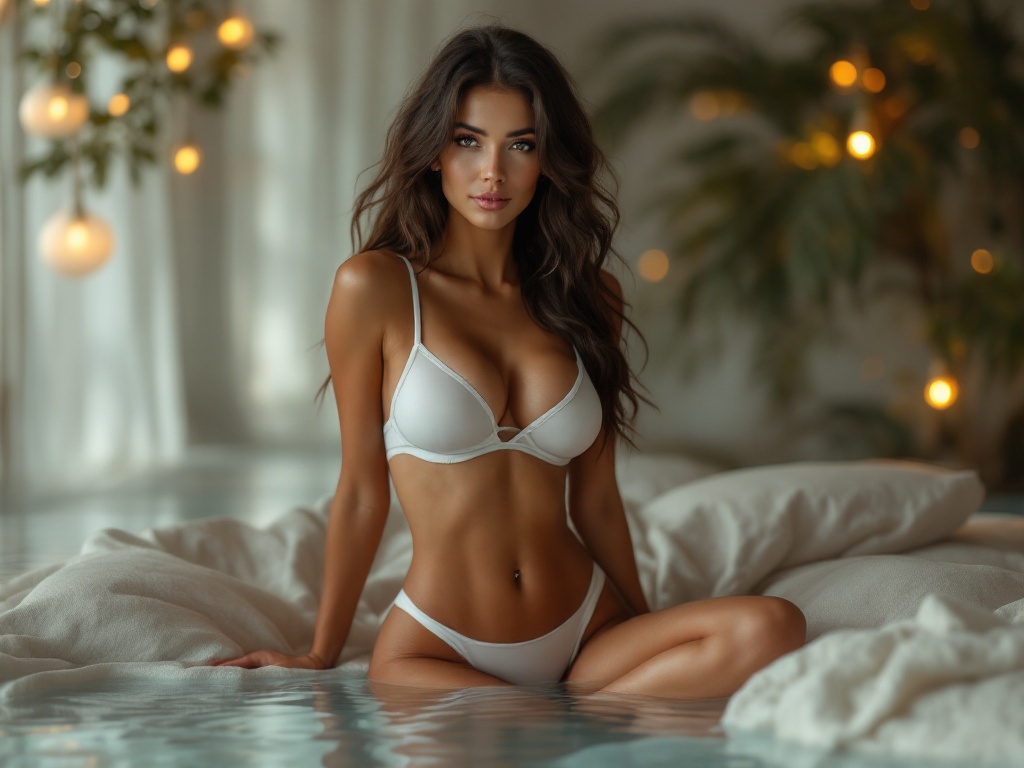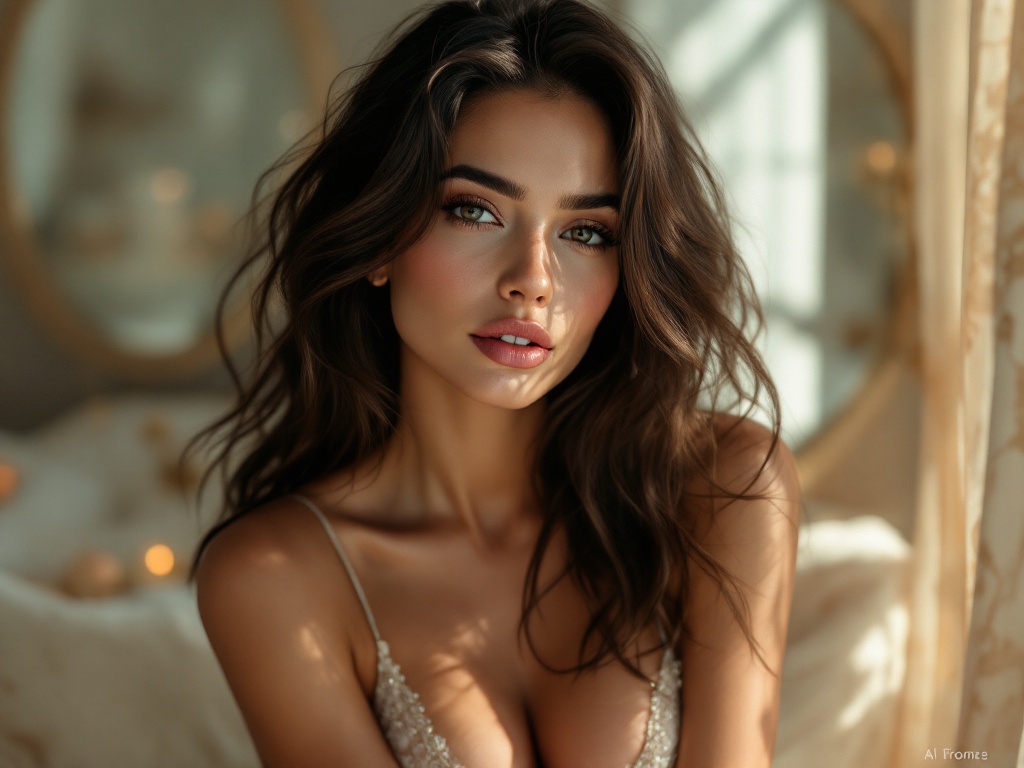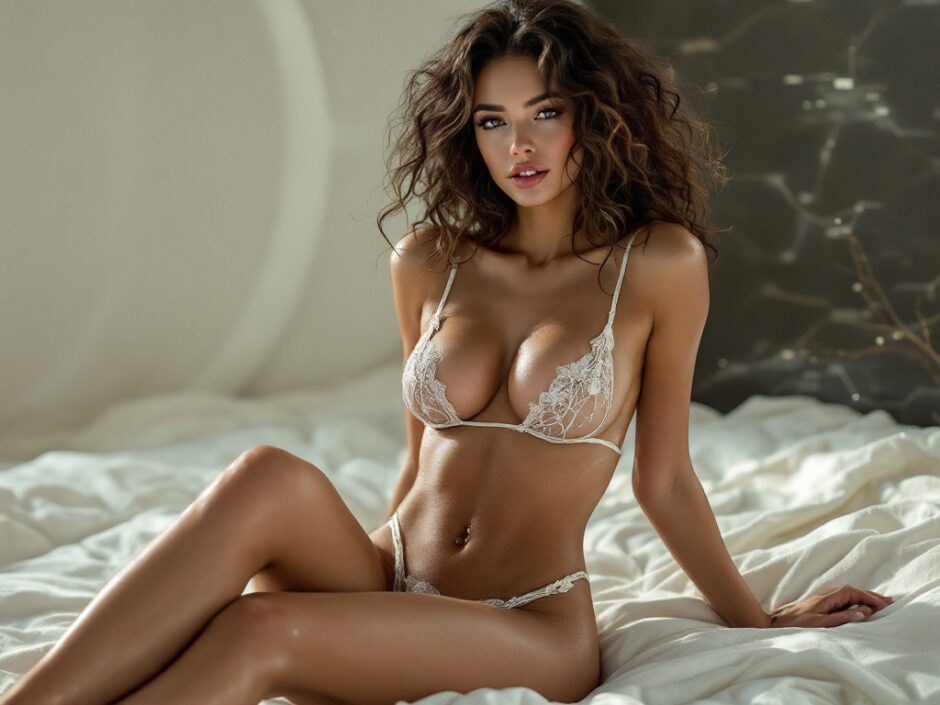As we navigate the innovative terrain of our digital era, AI-generated erotic art stands out as an intriguing frontier, merging technological advancements with the exploration of human sexuality. This groundbreaking approach contrasts age-old artistic interpretations of eroticism with algorithms engineered through intricate neural networks. More than merely a trendy occurrence, AI art is reshaping not only the visual aspects of erotic art but also our perceptions and interactions with it. The convergence of art and technology urges us to interrogate long-standing beliefs about creativity, authorship, and the essence of desire itself. In this changing landscape, existing boundaries are being tested, pushed, and, in some instances, entirely dismantled. Venturing through this new terrain is thrilling yet fraught with considerations that extend well beyond mere aesthetics.
The core of AI-generated erotic art lies in its capacity to craft elaborate depictions of the human form, often rendering sensuality in ways that are at once recognizable and unfamiliar. This representation raises ethical and cultural questions, especially as conversations surrounding consent and appropriation gain momentum. AI assimilates knowledge from existing artworks, amalgamating styles and techniques that may lack a profound understanding of human emotions. Therefore, it can be posited that while this technology expands the horizons of creativity, it may also struggle with the emotional resonance traditionally associated with eroticism. The real challenge is to present this innovation as a tool of liberation rather than mere duplication.
What Is AI-Generated Erotic Art?
AI-generated erotic art signifies works created through machine learning algorithms designed to generate artwork that delves into erotic themes. These creations can encompass everything from abstract interpretations to strikingly realistic images that provoke viewers to reassess their notions of beauty and desire. In contrast to conventional erotic artworks, which are often intensely personal and shaped by the artist’s experiences, AI art taps into an extensive dataset, synthesizing sentiments from a multitude of creators to forge new representations. This fusion of the individual and the algorithmic has ignited debates among art aficionados and critics, emphasizing the ongoing discourse around authenticity and emotional resonance.

| Aspect | AI-Generated Art | Traditional Art |
|---|---|---|
| Creator | Algorithmic systems | Individual artists |
| Emotional Resonance | Diverse | Intensely personal |
| Creative Methodology | Data interpretation | Human experience |
| Accessibility | Widely available | Restricted by artist’s distribution |
The Impact of Technology on Art
Historically, technology has continually transformed artistic expression, from the invention of the printing press to the rise of photography. Each new technological stride has ignited debates about the very essence of art and its creators. Today, AI is emerging as a pivotal player in this ongoing transformation, presenting a fresh set of parameters for artistry. Artists who integrate AI into their creative processes frequently find themselves pondering how much agency is surrendered when machines contribute to artistic creation. Every brushstroke or graphic element produced by an algorithm reflects the amalgamation of its training data, leading us to question whether it can resonate with human feelings.
The Role of Creativity in AI
At the heart of the discourse regarding AI-generated erotic art is the pivotal question of creativity. Can an artificial intelligence system, devoid of subjective experience, authentically produce work that captures the intricate emotions of human yearning and desire? Many assert that, although AI can replicate aesthetics, the true essence of creativity is likely an inherently human trait. The ramifications of this perspective for erotic art are significant: can contemporary audiences uncover emotional truths in works created by machines, or will they always yearn for the human touch behind the canvas? This line of inquiry invites us to reevaluate our definitions of creativity and artistry.
Legal and Ethical Considerations
The emergence of AI-generated erotic art introduces a host of legal and ethical issues that artists, audiences, and technology creators must confront. Copyright questions loom large, especially when AI systems train on existing artworks, sometimes failing to acknowledge the original creators. Moreover, concerns regarding consent are propelling vital discussions about whether AI can respectfully engage with sexual representations. This amplifies the risk of misappropriation of technology to produce art that may infringe on individual rights, particularly regarding erotic content.
The Debate Around Consent
Consent plays an essential role within the realm of erotic art. It can be argued that art based on existing content must fundamentally adhere to consent principles, particularly when those works portray human subjects. AI’s ability to decontextualize and reshape these images raises the potential for exploitation, necessitating a vigorous conversation around respect and acknowledgment. This discourse highlights the urgent need for frameworks that safeguard both artists and individuals, ensuring that the evolution of AI does not override ethical considerations.

Cultural and Societal Perspectives
Perspectives on erotic art differ markedly across cultures, and the advent of AI could unpredictably influence these views. What one community may celebrate as artistic expression, another may denounce as indecent or offensive. Grasping the cultural context in which AI-generated erotic art is introduced is crucial for its acceptance. As technology facilitates global dialogues, discussions about artistic liberty versus respect for cultural values become increasingly pressing. The opportunity for AI-generated art to resonate on a global scale may also empower marginalized voices to explore new avenues of expression, reflecting a wide array of sexualities and identities.
Changing the Narrative
AI-generated erotic art holds empowering potential for voices that have historically faced suppression or marginalization. By harnessing technology, artists can challenge conventional narratives and unveil eroticism in novel, authentic ways. This shift not only democratizes the accessibility of erotic expression but also enriches discourse surrounding sexual identities and freedoms. Expanding these horizons invites more extensive representation and thoughtful examination of the diverse ways in which sexuality can be experienced.
The Future of Erotic Art
As we progress, the seamless integration of AI into the domain of erotic art is set to usher in transformative changes. New artistic forms and expressions are certain to sprout, with creators venturing into uncharted realms of imagination and digital artistry. However, with these innovations come persistent challenges regarding ethics, consent, and cultural reception. The conversation will likely veer toward how technology can enhance rather than substitute the profoundly human elements that underpin creativity. In this audacious new frontier of art and technology, the exploration of eroticism promises to be all the richer, albeit potentially more complex than ever before.
Conclusion
In conclusion, AI-generated erotic art stands at the nexus of technology, creativity, and societal standards. As it challenges established boundaries, this evolving mode of expression ignites crucial discussions surrounding ethics, consent, and representation. Traversing the intricacies of this novel landscape necessitates a willingness to embrace innovation, paired with a dedication to understanding the delicate dynamics of sexuality as depicted in art. The art world, society, and technology are on the brink of revolutionary conversations, and embracing the future of erotic art necessitates remembering the values integral to its creation. Ultimately, it invites all participants to contemplate their roles in shaping the art of the future.
FAQ
- What is AI-generated erotic art?
AI-generated erotic art pertains to sexual-themed imagery created through algorithms and machine learning, enabling digital systems to produce visual content that reflects erotic themes. - Can AI-generated art be viewed as ‘real’ art?
Yes, AI-generated art can indeed be classified as real art, contingent on one’s interpretation of creativity and artistic expression. - What ethical dilemmas are associated with AI-generated erotic art?
Key concerns include copyright challenges, representation issues, consent, and the potential for misuse or harm. - How do cultural attitudes towards erotic art influence acceptance of AI-generated pieces?
Acceptance varies significantly among cultures, with some communities rejecting or embracing AI-generated erotic art based on their cultural values regarding sexuality. - What does the future hold for AI in the context of erotic art?
The future may bring more innovative expressions and wider acceptance of diverse sexualities, accompanied by ongoing discussions regarding ethics and boundaries.



